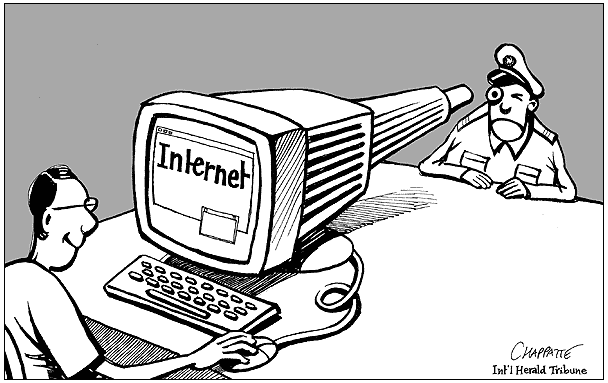Governments, traditional media, ISP’s have been grappling with the challenges of regulating content.  In the middle of Assam crisis last month, the Indian Government instructed ISP’s to block access to websites, and social media providers and platforms were instructed to remove accounts of a few identified for inciting the mass exodus of Northeastern Indians from cities across India, in the wake of communal violence in Assam. Not only did this bring about a massive reaction from twittering classes likening the ban to India’s Emergency in 1975, it also had the US Government swinging in to support Google, Facebook and Twitter on the issue of Freedom of Expression.
In the middle of Assam crisis last month, the Indian Government instructed ISP’s to block access to websites, and social media providers and platforms were instructed to remove accounts of a few identified for inciting the mass exodus of Northeastern Indians from cities across India, in the wake of communal violence in Assam. Not only did this bring about a massive reaction from twittering classes likening the ban to India’s Emergency in 1975, it also had the US Government swinging in to support Google, Facebook and Twitter on the issue of Freedom of Expression.
That brings me to the crux of the debate – when does Private become Public? It is well understood by most, that in democratic societies, there needs to be a large space for debate and discussion, but there is a basic code that is followed, to remain within the framework of governance and citizenship. When forums for Public discussion are squashed or removed, dissent takes new forms and goes underground. On the other hand, Open platforms, especially, in the nano-second push-button world of micro-blogging, are fraught with the threat of being taken over by rabble rousers, bullies and trolls.
Contrast this, with the ethos and intent of social media and networking. At its core, social media technologies create a virtual space for ‘people like us’ to interact and engage with each other. In a way this makes your ‘virtual’ drawing room conversations go viral across all your followers and friends creating at its extreme, two behavior types;
- The exhibitionist, who leads the show with Facebook Vacations and events mainly to post pictures and tags across cyberspace
- The voyeur, who watches and ‘like’s and comments sometimes, re-tweeting or sharing the above content.
I over-simplify, but among over 100 shades of grey, these two behaviours stand out.
On the other hand, there are “people like them”, who gravitate to take extreme positions and make the ‘virtual’ drawing room debate into a ‘vicious’ one, hounding out all contrary opinions, and through sheer bludgeon power, and bullying tactics nullify any and all attempt at moderation. The conversation then, quickly moves from issues to personalities, from commentary to rumor mongering and through cheap and ubiquitous mobile internet and SMS access into fear psychosis.
In these so-called empowered times of instant sharing and collaboration, the fact of the matter also remains that, driven by SMS’s, videos, and tweets, over 50, 000 people from North eastern India, left their jobs and homes across India to return to their home states, due to fears of reprisal attacks.
In all democracies, as well as in India, forums for dissent are in-built. Traditional media has a strong and protected role in sharing information that can create influence and opinions. And this responsibility is assumed by media, by verifying facts and sources.
And even though, TV debates trade the space for facts for TRPs, in high-decibel verbiage, online and social media have so far escaped from carrying this responsibility, almost in toto.
In the absence of any effective self- regulation or content cleansing by most popular social media platforms, perhaps, in their drive for users, this is where regulation will come in. The lesson here for social netizens is very clear. You cannot exhibit ‘extreme’ behavior in public even if you may be doing it in the privacy of your on-ground drawing-room. It could be draconian, and it will in many cases, hamper freedom of expression, but when private becomes public, the rules of public discourse will apply.